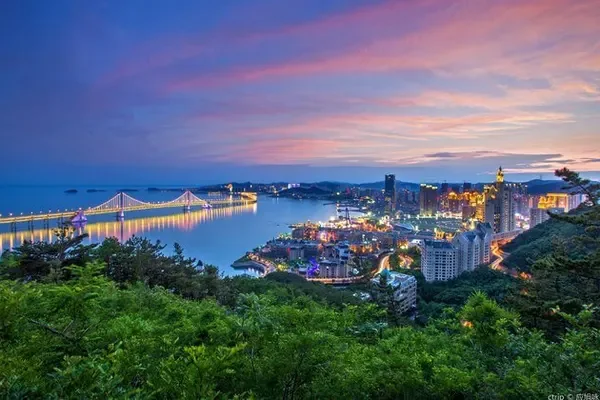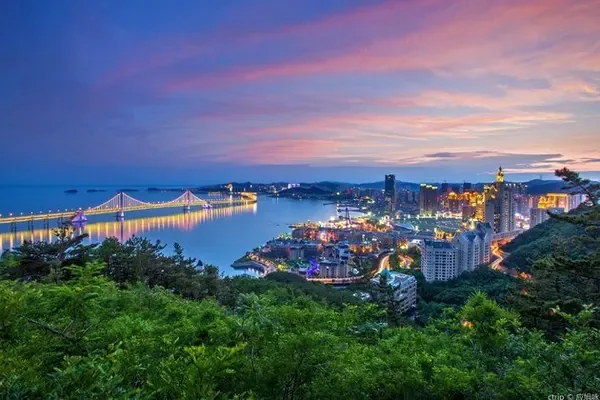The road to Shu is no longer difficult, and the natural moat becomes a thoroughfare
Since the self-driving tour in western Sichuan started in 2009, this year is the tenth year, and I have set foot in western Sichuan ten times in ten years. This year, I set foot on the land of western Sichuan again with my friends, and I feel a lot of feelings in my heart.
Considering the fact that the roads in Wenchuan area were washed away by the flood in the early stage, the design of the west Sichuan tour basically revolves around National Highway 318: after picking up the car in Chengdu, arrive at Xinduqiao, then Kowloon, Xinduqiao, Aden, Xinlong, Xinduqiao Duqiao, and finally back to Chengdu.
Xindu Bridge
I remember that ten years ago, it took us two days to travel from Chengdu to Kangding. The road conditions were really bad. From Ya’an, we took the expressway and walked on National Highway 318, and we started the journey of abuse. Most of the roads were potholes. ,dusty. Now, it only takes four and a half hours to travel from Chengdu to Ya'an by taking the expressway, then transfer to Yaye Expressway to Kangdingxia, and take National Highway 318 to Xinduqiao. National Highway 318 is paved with asphalt throughout, and many winding roads are straightened by bridges and tunnels, which saves a lot of time by eliminating the need for turning and climbing up and down. Pass, reward your eyes with the beautiful scenery in front of you.


When I arrived at Xinduqiao at the end of September, most of the trees had not changed color, only a few sparse trees gradually turned yellow or red, but on the day I left and returned to Chengdu (October 5th), the hillside was already green The forest is fully dyed, and the colorful forest spreads in front of our eyes. It is a visual feast, but it is a pity that the camera can no longer truly express the beauty of what we see.

Xinduqiao is a must-stop place for traveling in western Sichuan, so accommodation and catering are very convenient now, unlike when I first came here ten years ago, I still had a headache because I couldn't eat vegetables.

Xinduqiao is known as a photographer's paradise. In fact, it does not have fixed scenic spots, but it is distributed on both sides of the road within a range of 10 kilometers from Xinduqiao Town.
If the weather is fine, you can see the majestic figure of Gongga Mountain in Xindu Bridge.


Xindu Bridge - Kowloon
From Xinduqiao to Kowloon, we took Provincial Highway 215. The original plan was to go from Chengdu to Mianning, and from Mianning to Kowloon. However, due to the construction of a hydropower station between Mianning and Kowloon, the road traffic conditions are not very good. To ensure travel safety and It went well, so I decided to go from Xinduqiao to Kowloon.
The roads in Province 215 are in good condition, and there are several scenic spots planned along the way: Lianhua Lake (also known as Lotus Sea), Quanhua Beach.
When we left Xinduqiao, the weather was gloomy, and it was sunny until Lianhua Lake, so the scenery on both sides of Provincial Highway 215 was not so attractive. It was the first time for my friends to go to western Sichuan, and it was quite novel to see the watchtowers.





The Lianhua Lake scenic spot is about 20 kilometers away from Provincial Highway 215, and the road conditions are okay. There are no tickets for the scenic spot, and only a parking fee of 20 yuan per car is charged. Next to the parking spot is Moon Bay, and Lianhua Lake is about an hour's walk from the parking spot (according to local villagers). Walking along the path by the lake, you can see that the clear lake water changes in different colors. Although it is not as diverse as the lake water in Jiuzhaigou, it is still very beautiful. Since it was before the National Day holiday, there were only four of us in the scenic area, and it was extremely quiet.






















Leave Lianhua Lake and go back to Provincial Highway 215 to continue on. At a place not far from Kowloon, drive onto a rural road to Quanhua Beach. The first section of the road is newly paved asphalt, but the road surface is completely clean after driving for about three or four kilometers. The state of overhaul and the poor road conditions made it hard to reach the Quanhuatan scenic spot, but the villagers told them that it took nearly an hour to climb uphill to see Quanhuatan. Since they still had to rush to Kowloon, there was really not enough time, so they had to give up this scenic spot.
When I came to Jiulong County, I felt pretty good, better than expected, and it was very convenient to eat and everything.
From Kowloon to Wuxuhai, you take a town road, the road condition is basically good, there is a parking lot about four kilometers away from Wuxuhai, buy tickets for the scenic spot traffic car to enter (ticket 50 yuan/person, fare 20 yuan/ people). After driving for about 15 minutes, the traffic car in the scenic spot arrived, and then continued to walk for about five or six minutes, passing through a grass field and coming to the lake. Cloudy and windless, the lake is like a mirror, quietly reflecting all the surrounding scenery clearly. A few trees at the foot of the mountain on one side of the lake have changed into yellow and red leaves, which complement the reflection in the lake.














Take a leisurely stroll along the path by the lake, taking many photos while changing scenes. Wu Xuhai is not very big, and an hour and a half is enough to play slowly.
We met a white pony by the lake, we watched it, and it also looked at us curiously, then slowly walked up to us, sniffed our scent with its nose, and we stroked its forehead in return, The man and the horse enjoyed each other.



Xindu Bridge - Aden
From Xinduqiao to Aden, we take National Highway 318 and Liya Highway (that is, the highway from Litang to Aden, which are Provincial Highway 217 and Provincial Highway 216 respectively), and the road conditions are very good throughout the journey. When Xindu Bridge comes out, it first passes through Yajiang County, and after leaving the city, it starts to walk on the Panshan Road, but basically there is no need to go to the pass, which saves energy and time.


The scenery of National Highway 318 from Xinduqiao to Litang is actually very good, but it was cloudy when it passed that day, so there was no scenery to enjoy. In the afternoon, the sky was already clear on the Liya Highway, and I enjoyed the Stone River Scenic Spot, Red Grass Scenic Spot, and Poplar Forest Scenic Spot along the way.























Now Daocheng County and Yading Shangri-La Town are very lively, and all kinds of tourist hotels and supporting facilities are also very complete. Recalling the first time I stayed in Daocheng, it was in a Tibetan house. When going to the toilet, you have to go to the toilet outside the building (that smell! ~~~~).
The next morning, the sky was clear and clear, which was really a good weather to enjoy the beautiful scenery of Aden.












Aden - Xinlong
Leaving Yading for Xinlong, not far from Daocheng County, I saw local people harvesting crops (I think it was highland barley). I recalled that when I traveled in western Sichuan a few years ago, the land I saw was basically used for grazing, and there was very little farming. This time Then I saw that the agricultural area has increased a lot. I think the government guides the local people to abandon herding and turn to farming to get rid of poverty. My wife blamed me for not taking pictures of the local people's farming. Now I think about it, it's really a pity.

Before going to Xinlong, I went to the Cuoka Lake Scenic Area. It is actually a small water surface, and friends in the same industry jokingly called it a fish pond. There used to be no scenic spots here, but now that there are more people coming, it has become an Internet celebrity place, and the monks of the Cuoka Temple, which lives near the water, do not clean up well, and run out to maintain traffic order and collect fees ( 10 yuan/person plus 20 yuan/car).
Although Tsoka Lake is small, the scenery is not bad. There was a rain in the mountains in the distance, and after the rainbow was set up, the scenery in front of me was even more beautiful.








Xinlong County is smaller than the previous counties where I stayed or passed through. The Yalong River passes through the city, but it is still clean and orderly, and life is convenient. I was a little surprised to see many people wearing Muslim white caps in the city. There are actually many Muslims living here.


Originally planned to go to Larima Grassland or Picha Valley near Xinlong County, but suddenly caught a cold and had to give up.
Xinlong---Xindu Bridge
According to the plan, this trip is from Provincial Highway 217 to National Highway 317, via Luhuo and Bamei, and then transfers to Provincial Highway 215 from Tagong to Xinduqiao. However, before departure, the Gaode map showed that a section of the road between Provincial Highway 217 and National Highway 317 was closed, requiring us to take Provincial Highway 217 from Xinlong back to Litang, and then return to Xinduqiao via National Highway 318. I was unwilling to walk like this, so I proceeded according to the plan, and found that there was indeed a section of Provincial Highway 217 due to landslide construction, but there was a sidewalk, and the distance was very short, which basically had no effect on the entire itinerary.
Between Provincial Highway 217 and National Highway 317, there is the Yalong River Canyon, and the scenery is acceptable.



The section from National Highway 317 to Bamei is called China Panda Avenue, and the scenery is beautiful.
















Today's Bamei and Tagong can't imagine what they were like ten years ago. At that time, Bamei was just a small village. Except for Tagong Temple, there were only a few dilapidated houses beside the road. When the trip passed through Tagong, there was a serious road congestion in the opposite lane, which stretched for several kilometers. There were row upon row of houses in Tagong Town, and there were many tourists.


When I left Tagong Town, I saw that the hillside beside the road was already covered with colorful forests. This was the first sight I saw since this trip.


In Tagong, you can see Yala Snow Mountain (unfortunately, the clouds are too thick to appreciate this time) and enjoy the beautiful Tagong Grassland.







Back to Xinduqiao, the trip to western Sichuan is basically over. Great changes have taken place in roads, accommodation, and catering in the past ten years, which is convenient for tourists. What remains unchanged is the beautiful scenery of western Sichuan.

